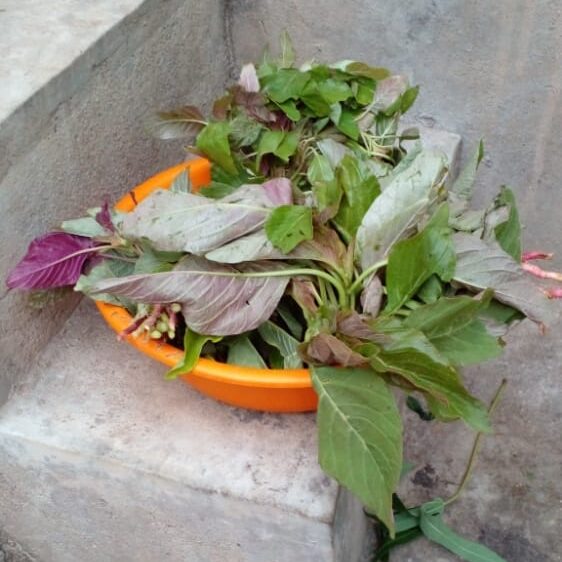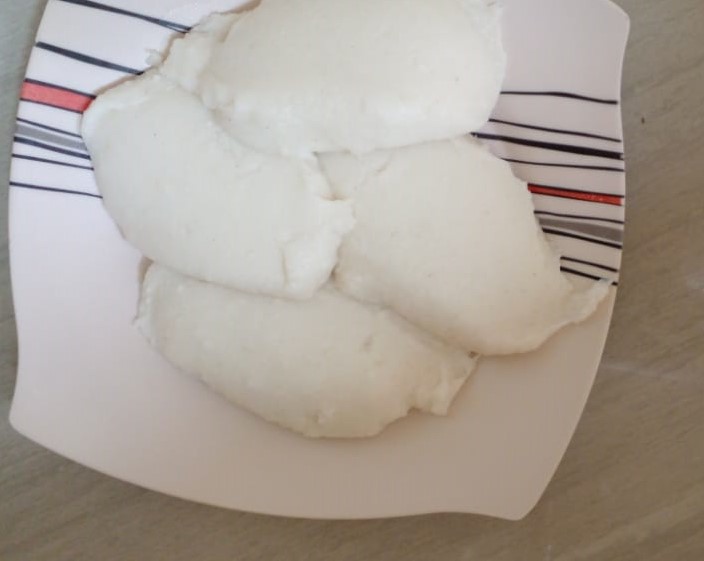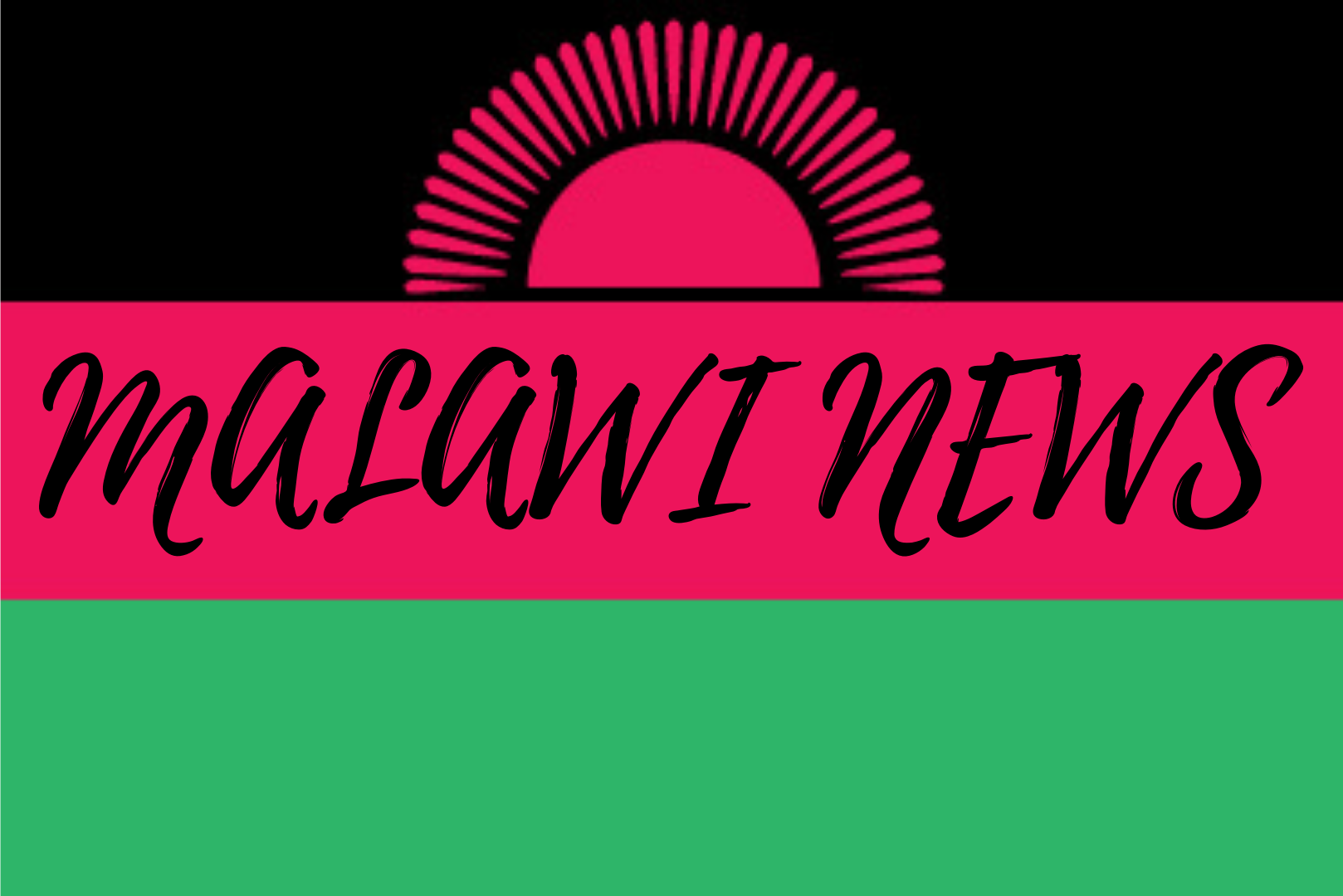料理や芸術の世界では、新しいアイデアを探求し、自分の道を切り開くことなしには、人は生きていけないのです。
好奇心があまりない場合、私たちの心は非常に同じ古いアイデアの中で固定され、縛り付けられたままである可能性があります。
レンジローバー、BMW、トヨタ、VWなどの車と同じように、私たちの体は燃料によって動かされている。
このような現象はマラウイでも例外ではありません。
マラウイには、美味しくて栄養価が高く、他の食品と違って多くの材料を必要としないので調理が簡単な郷土領地があります。
美味しくて栄養価が高いにもかかわらず、これらの食品は世界の料理シーンで十分に紹介されていません。
他の食品と同様に、マラウイの食品もまた、保護食品、エネルギーを与える食品、体を構築する食品にグループ化することができます。
ここでは、これらの食品について詳しく説明し、現地でどのように調理されているかを見ていきましょう。
【マラウイの郷土料理】保護食品

まず、保護食品について見てみましょう。
果物や野菜がありますが、ここでは野菜に焦点を当てます。
例えば、チソソ(ブラックジャックの葉)、ボノングウェ(アマランサス)、チグワダ(キャッサバの葉)、ンクワニ(カボチャの葉)、ンクワニャ(豆の葉)などが挙げられます。
中でもボノングエは調理が簡単で、ビタミンを多く含む野菜です。
また、体内の赤血球の生成を助けると言われており、特に葉の色が赤いものは、効果が高いと言われています。
また、貧血の症状がある子供には、アマランサスを調理した水を飲ませるように医師から指導されることもある。
ボノングエは、塩と水とトマトさえあれば簡単に作れます。
よく洗ったアマランサスを鍋に入れ、塩と少量の水を加え、5分ほど煮込みます。
キャッサバの葉も野菜の一種ですが、こちらはアマランサスとは異なり、少し手がかかります。
まず、野菜をすり鉢とすりこぎで潰し、十分に潰したら、鍋に水1カップを沸かします。
炭酸水素ナトリウムをひとつまみ、塩をひとつまみ加え、鍋に野菜を入れてかき混ぜる。
5分後、トマトと落花生を加え、混ぜ合わせ、7分後に出来上がりです。
【マラウイの郷土料理】エネルギー源
もうひとつは、エネルギー源となる食品です。
甘いビール(トブワ)、バナナのフリッター(ジトゥンブワ)、ソルガムきび、ンシマ、おかゆ(ムガイワ・ポリッジ)、アフリカンケーキ(チグム)、フタリなど、数えればきりがないほどです。
それでは、これらの食べ物がどのように調理され、どのようなレシピで作られているのか、まずはンシマから見ていきましょう。

ンシマは、メイズ(トウモロコシ)の粉とキャッサバの粉から作られる濃厚なお粥のようなものです。
キャッサバ粉を使ったものはコンドーレと呼ばれ、マラウイ北部で好まれています。
一方、メイズの粉で作られたンシマは、マラウイ全体で食べられているものです。
ンシマはマラウイの主食で、昼食と夕食によく食べられます。
昔は「マラウイ人は夕方から夜まで何も食べていない」と言われましたが、何も食べていないわけではありません。でも、ンシマは昼食と夕食だと思っているので、それ以外ではンシマを食べなかったのです。
このような話から、ンシマはマラウイ人の好物であり、特にメイズの粉で作られたンシマが好物であるとされています。
ンシマの作り方は、2カップの水を注ぎます。
沸騰したら10分間かき混ぜ、さらに小麦粉を加え、手で丸められるまでかき混ぜる。
その後、濡らした木べらですくい、皿に盛る。
ンシマは、野菜や肉豆など、いろいろな食材と一緒に食べることができます。
お粥もマラウイ人が好む食べ物のひとつです。
一般的なお粥は、メイズの全粒粉から作られます。
お粥は朝食として、また幼児には昼食や夕食として食べられています。
お粥は簡単に調理できます。
牛乳を使う人もいますが、大半は水で調理します。
鍋に3カップの水を入れ、塩を一振りして、メイズの粉を1カップ、あれば落花生粉を大さじ4杯入れます。
そして、木べらでかき混ぜ、かき混ぜながら沸騰させます。
15分ほど沸騰させた後、砂糖を加え、お粥の出来上がりです。
お金がある人は、ピーナッツバターやマーガリンを入れる人もいるそうです。
【マラウイの郷土料理】体を作る食品
最後は、体を作るための食品です。
これらの食品には、魚(チャンボ)、豆、地鶏、牛の豆などが含まれ、リストは続きます。
チャンボはマラウイ人が大好きな料理の一つで、とても美味しく、以前試食した海外の人たちにも人気でした。
他の新鮮な魚と同じように、チャンボも焼いたり、揚げたり、煮たりすることができます。
それでは、現地でのチャンボの煮付けをご紹介しましょう。
チャンボの煮付けを作るには、魚を適当な大きさに切り、きれいな水で洗います。
次に、トマトを適当な大きさに切り、玉ねぎも適当な大きさに切ります。
鍋にトマトをいくつか入れ、その上にチャンボ(魚)を並べます。
そして、残りのトマトと切った玉ねぎをチャンボ魚の上に乗せる。
塩を一振りし、大さじ2杯の油を入れますが、油を入れない人もいます。
約15分間、中身を煮込みます。
煮ている間、鍋に水があるかどうか、なければ何度か確認すること。
チャンボは主にンシマと一緒に出されます。
マラウイにはたくさんの食べ物がありますから、私たちが食べている食べ物やその調理法をリストアップしていけば、丸々一カ月かかるかもしれませんね。
すでに述べたように、これらの料理は世界の料理シーンでは代表的なものではありません。
しかし実を言うと、私たちの郷土料理は美味しく、栄養価も高いのです。
その上、病気を引き起こす可能性のある他の食品とは異なり、病気と戦う力があると信じられている食品もあるのです。
In the world of culinary and arts no man can survive without exploring new ideas to spice up his or her way.
Our mind could still remain locked and bound within the very same old ideas if not much curiosity is invested in.
Like any other car, Range Rovers, BMWs, Toyota VWs etc.,
Our bodies are driven by fuel and this fuel is energy we obtain from food.
Malawi is not exceptional for this familiar phenomenon.
Here in Malawi, we have our on local foods which are delicious, nutritious and easy to cook since does not require a lot of ingredients unlike other foods.
Despite the foods being yummy, nutritious, these foods are under-represented in the world culinary scene.
Like any other foods, Malawian foods can also be group into; protective foods, energy giving foods and body building foods.
Let us look into these foods in details and how they are prepared locally.

Firstly, let us look into protective foods.
These include fruits and vegetables, but our focus is on vegetables.
Examples of these vegetables include Chisoso (black jack leaves), Bonongwe (Amaranthus), Chigwada, (cassava leaves,) Nkhwani ( pumpkin leaves)and Nkhwanya ( beans leaves) just mentioning few.
Above all listed vegetables, Bonongwe is the easiest one to cook and it contains a lot of vitamins.
It is also believed that it supplements the synthesis of red blood cells in the body especially the one which has red color leaves.
And in some cases, the doctors advise parents to give their children water of cooked Amaranthus vegetables when the child is developing some symptoms of anemia.
Bonongwe is easy to cook as it just requires salt little water and tomatoes.
Well washed Amaranthus is put on in a pot salt and water is added to it with a little water and cook it for not more than five minutes.
Cassava leaves is also another kind of vegetable but unlike Amaranthus, this one it is little bit involving. Firstly, the vegetables are pounded using a mortar and aided by a pestle.
When it has been enough pounded, boil one cup water in a cooking pot.
Add a pinch of sodium bicarbonate, dash of salt and then put the vegetable in the cooking pot and stir.
Wait for five minutes and then add tomatoes and groundnut flour, mix and wait for about seven minutes then serve it.
Another group is energy giving foods.
These foods include sweet beer (Thobwa), banana fritters (Zitumbuwa), sorghum, Nsima, porridge (Mgaiwa porridge), African cake (Chigumu) and futali but the list is endless.
Let us see how some of those foods are cooked and how recipe of some of these foods are prepared and let us start with Nsima.

Nsima is thick porridge like made from maize flour and cassava flour.
The one made from cassava flour is known as Kondoole and preferred in the Northern region of Malawi.
Whilst Nsima made from maize flour is the one eaten country wide.
Nsima is Malawian staple food which we mostly eat as lunch and supper.
In the past years people were like,” we haven’t eaten this evening or this afternoon ” they did not mean that they didn’t eat anything no! But because they did not eat Nsima as it is believed that that is lunch and supper.
From those stories we can conclude that Nsima is the Malawian favorite food especially the one made from maize flour.
To cook Nsima pour two cups of water.
Wait for it to warm then add maize flour to make a thin porridge, stir the mixture until it boils then wait for ten minutes and then add some more flour to the pot while stirring continuously till it is thick enough that the porridge can be marbled by hand.
Then scope the porridge with a wet wooden spoon and flip it into the plate.
Nsima can be served with vegetable, meat beans, and any other relish.
Porridge is also another kind of food liked by Malawians.
Common porridge is made from whole maize flour.
Porridge is mostly considered as breakfast and as lunch or supper to toddlers.
Porridge is simple to cook. Some people use milk but the majority use water when cooking.
The recipe of a simple porridge is as follows; pour three cups of water in a cooking pot, add a dash of salt and pour one cup of whole maize flour and four tablespoon of groundnuts flour if available.
Then stir with a wooden spoon. Bring the contents to boil while stirring.
Let it to boil and bubble for fifteen minutes and add sugar to it. The porridge is ready to serve.
Some people who have money they even add peanut butter and margarine.
Last group is body building foods. These foods include fish (Chambo), peans, local chicken and cow peas and the list continues.
Chambo is one of the favorite relish of Malawians and is very delicious and international people who have tested it before can agree with me. Like any other fresh fish, Chambo can be grilled, roasted fried, and also boiled.
Let us see how to cook boiled Chambo locally.
To cook boiled Chambo, cut the fish into pieces and wash with clean water.
Then cut tomatoes into small desired pieces and so the onion.
Put some tomatoes in the cooking pot and put the Chambo fish on top of tomatoes.
And then put the remaining tomatoes and the cut onion on top of the Chambo fish.
Add a dash of salt and two tablespoons of oil though some don’t put the oil.
Cook the contents for about fifteen minutes.
As it is cooking keep on checking if there is water in the pot and some if not.
Chambo is mostly served by Nsima.
If I can keep on listing down our local foods and how they are cooked, it can take us the whole month because there are a lot of foods in Malawi but as already said the foods are und- represented in the world culinary scene.
But to say the truth our local foods are delicious and nutritious.
On top of that, it is believed that some of the foods are at fighting the body against disease unlike some other foods which can cause disease in the body.
Mukawuniwuni ofuna kuwonjezera nzeru ndi njira zina pa nkhani yazakudya, anthu ambiri ali pakalikiliki owunguzaunguza maganizo ndi nzeru zina zofuna kukomesera njira zakaphikidwe ka zakudya.
Monga mmene achitira ma galimoto amtundu uja wa Range Rover, BMW, Toyota vW ndi ena pogwirisa ntchito mafuta ndi mmenenso matupi aanthu adaumbidwira poti nawo amayendera mphamvu yochokera Ku zakudya zosiyanasiyana.
Malawi ndi dziko limodzi lomwe kuli zakudya zousa mudyo komanso zopangisa aneba amve mbebe pongomva fungo lokha lazakudya zake. Ndizachiziwikire kuti olo nsima utha kudyera fungo lokha , la chakudya chopezeka Ku Malawi.
Ngakhale dziko lamalawi lili losalidwa pankhani ya zakudya zi, nazonso zakudya zake zidagawidwa mmagulu opasa thanzi, mphamvu ndi Omanga thupi. Mukawuniwuni walero tiyeni tiwone mmene zakudya zachimalawi zimaphikidwira.

Poyamba mu gulu la zakudya la zopasa thanzi muli zakudya monga zipaso ndi masamba. Tiyeni tizame pa nkhani yamasamba.
Masamba monga chisoso, bonongwe , chigwada, nkhwani komanso khwanya ndi ena mwamasamba omwe amakondedwa kumalawi.
Pa zonsezi bonongwe ndiye yemwe savuta kuphika ndipo amakhala ndi ma vitamin ambiri komanso amathandizira pa kapangidwe ka magazi.
Mchifukwa chake muzaona inu , adokotala akulimbikitsa makolo kuti aziwapasa ana awo amene akuonesa zizindikiro za kuchepa kwa magazi, madzi ofinyidwa kuchokera Ku bonongwe ophisidwa mu madzi otentha kwa kamphindi. Bonogwe saonesa nyekhwe pophika ayi, poti ndi kamchere komanso ka tomato kochepa chabe mutha kukomesera chakudya chanu.
Kwa mphindi zisanu zokha tokotesani bonongwe wanu osuka bwino pamodzi ndi mchere komanso phwetekere wanu ndipo amakhala watheka.
Chigwada nacho ndimtundu wamasamba koma achikulire awa amakhala ngati azivutirapo pakaphikidwe.
Choyamba, sinjani masamba a chinangwa mu mtondo ndipo zikasinjika bwino bwino anga muja iwonekera nyama yokhala mkati mwa soseji.
Ikani mu mu mpoto okhala ndi madzi asoda ochepachabe ndipo kondowezani kwa mphindi zisanu.
Kenako sirani ufa wamtedza/nsinjiro komanso Matimati wanu. Mutadikiranso kwa mphindi zochepa chabe chakudyachi chimakhala chatheka tsopano.
Mu gulu LA zakudya zopasa mphamvu muli zakudya monga thobwa, zitumbuwa, mapira, phala ,chigumu, nsima komanso futali.
NSIMA

ili ndi phala lokhutala komanso Landii lopangidwa kuchokera Ku UFA wa chimanga komanso chinangwa.
Nsima ya ufa wa chinangwa imadziwika ndi dzina loti Kondoole ndipo imakonda kudyedwa Ku chigawo chakumpoto kwa dziko lamalawi.
Nsima ya ufa wachimanga ndiye imadyedwa dziko lonse la Malawi ngati nkhomaliro komanso mgonero.
Anthu ambiri akatha tsiku osadya nsima amati tsiku limenero sanadye. Iwotu samakhala kuti akusala chakudya ayi, komano amakhala kuti sanateme mbamu.
Pofuna kuphika nsima, ikani makapu awiri amadzi mumpoto ndipo wilisani.
Thiranimo ufa ndipo takasani mpaka phala lanu liyambe kutokota.
Dikirani kwa mphindi zosachepera khumi ndipo ikanimo UFA wambiri mpaka phala lilimbe.
Pakulani nsima ndipo ikani mumbale.
Nsima itha kudyedwa pamodzi ndi masamba, nyama, nyemba komanso ndiwo zilizonse.
PHALA
Ichi ndi chakudya chomwe chimadyedwa ngati kadzusa komanso nkhomaliro ndi mgonero kwa ana achichepere.
Phala silivuta kuphika ndipo silifuna zambiri.
Mkaka utha kugwirisidwa ntchito kukomesera phala.
Monga mmene muyambira pophika nsima, ikanimoninso ka mchere pang’ono ndipo likatokota kwa mphindi khumi ndi mphambu zisanu phulani ndipo thiranimoni shuga.
Apa mutha kumayan’ana kuli mkombero oti mudyere.
Anthu ena okhala ndimakobiri amathanso kuikamo sitoko komanso chiponde.
Gulu lotsiriza ndilo la chakudya chomanga thupi. Mugululi muli chakudya monga nsomba(chambo), nkhuku, nyemba ndi zina zambiri.
CHAMBO
Iyi ndi nsomba yokoma komanso yokondedwa Ku Malawi ndipo anthu ena amayiko akunja omwe analawapo chakudyachi atha kuchitira umboni za izi.
Chambo chitha kuotchedwa mmafuta komanso kuwirisidwa.
Pofuna kuphika nsombayi yowirisa. Iduleni ndipo isukeni ndi madzi aukhondo.
Phikani limodzi ndi tomato komanso anyezi odula bwino. Ikanimo kamchere pang’ono ndi masipuni awiri a mafuta ngakhale ena samayikamo mafuta. Phikani kwamphindi zosachepera khumi ndi mphambu zisanu.
Chambo ndichokoma zedi!
Kwalero tibalekera pompa kamba koti tipitilize, dzuwa litha kulowa tidakakambabe poti zakudyazi zilipo zambiri ndipo zitha kutitengera mwezi onsewu.
Monga mmene tanenera poyamba kuti zakudyazi ndizosadziwika kwenikweni mmayiko akunja.
Koma kunena chilungamo zakudya za kumalawi ndi zokoma ndiponso zozuna.
Zina mwa izo zimathandiza thupi pankhondo yolimbana ndimatenda.
今回のメインブロガー:プリスカ・B・クペラ
(カムズ大学医療科学部医学生)
This time’s main blogger: Prisca B Kuphera
(Premedical student at Kamuzu university of Health sciences)
アシスタント ブロガー:ニアシャ・ングルウェ
Assistant Blogger: Nyasha Nguluwe
ロイヤル・タレント・ユースの設立者でCEO
ロイヤル・タレント・ユース:
自分たちの能力を使用した国際的で明確な存在感を持って、学術的、精神的、知的な面で人間への最高のインフルエンサー、志を持つ者、モチベーターになることをビジョンとする若者による組織です
Founder and Chief executive officer at Royal Talented youths; a youth led organisation with a vision of being best influencers, aspirants and motivators to the human race in academical, spiritual and intellectual dimensions in Malawi with international visible presence by using our talents.
Contact details: +265998637912
WhatsApp: +265886765101
Email: nguluwenyasha360@gmail.com
District of origin: Mulanje (chonde)
Residential District: Thyolo (Bvumbwe)

 Moni Malawi
Moni Malawi 